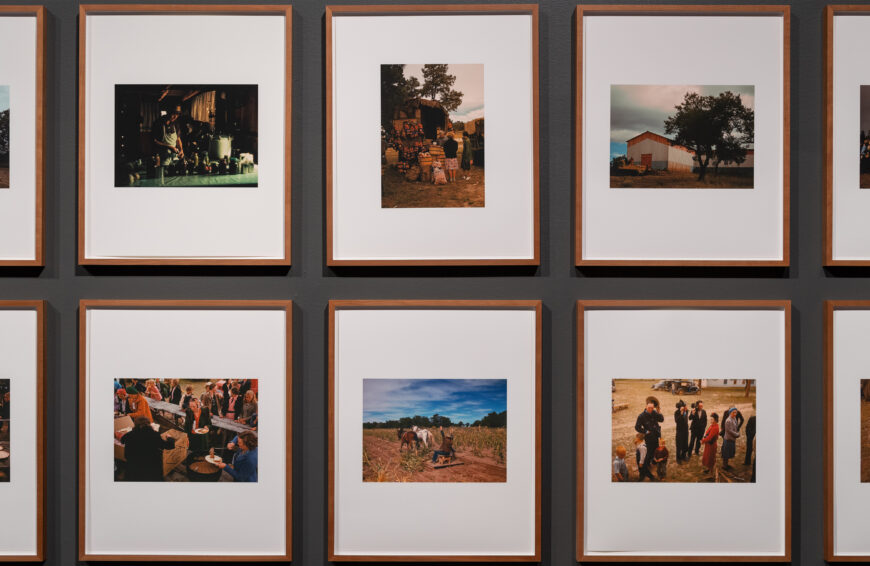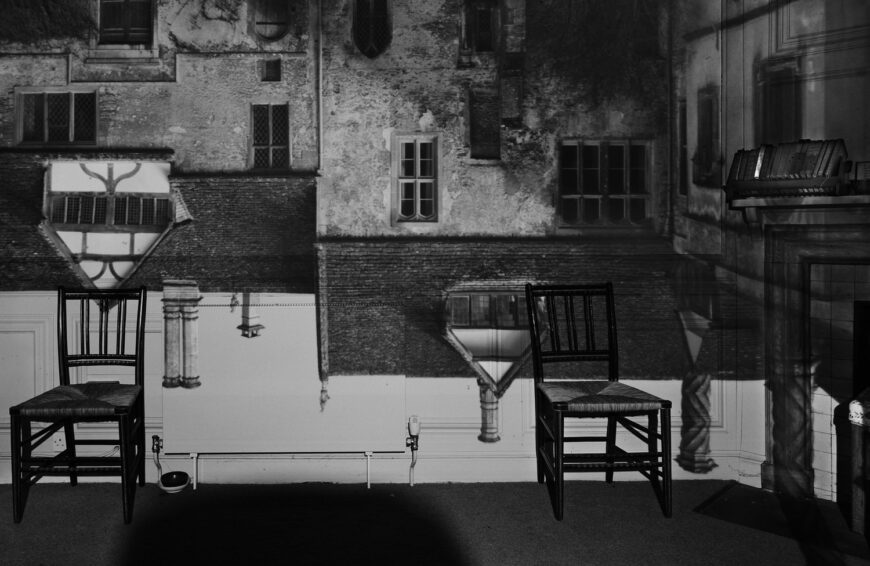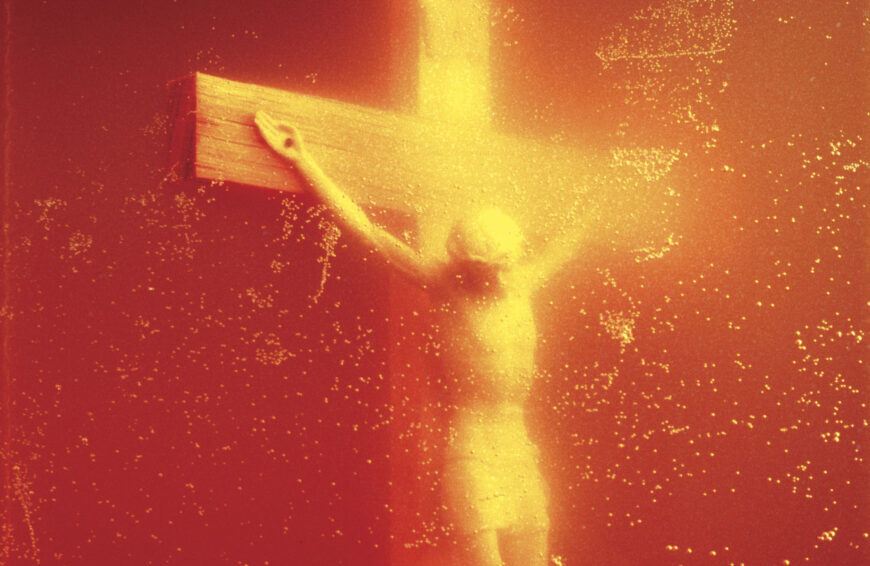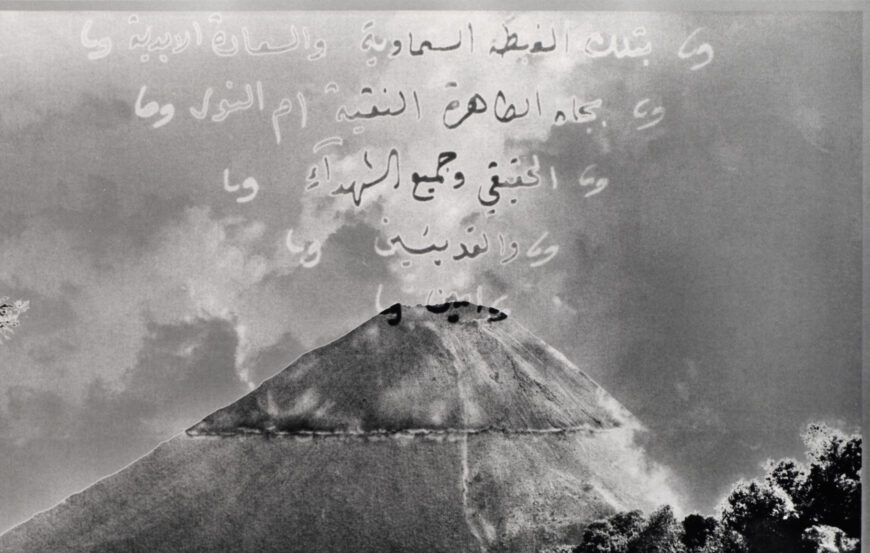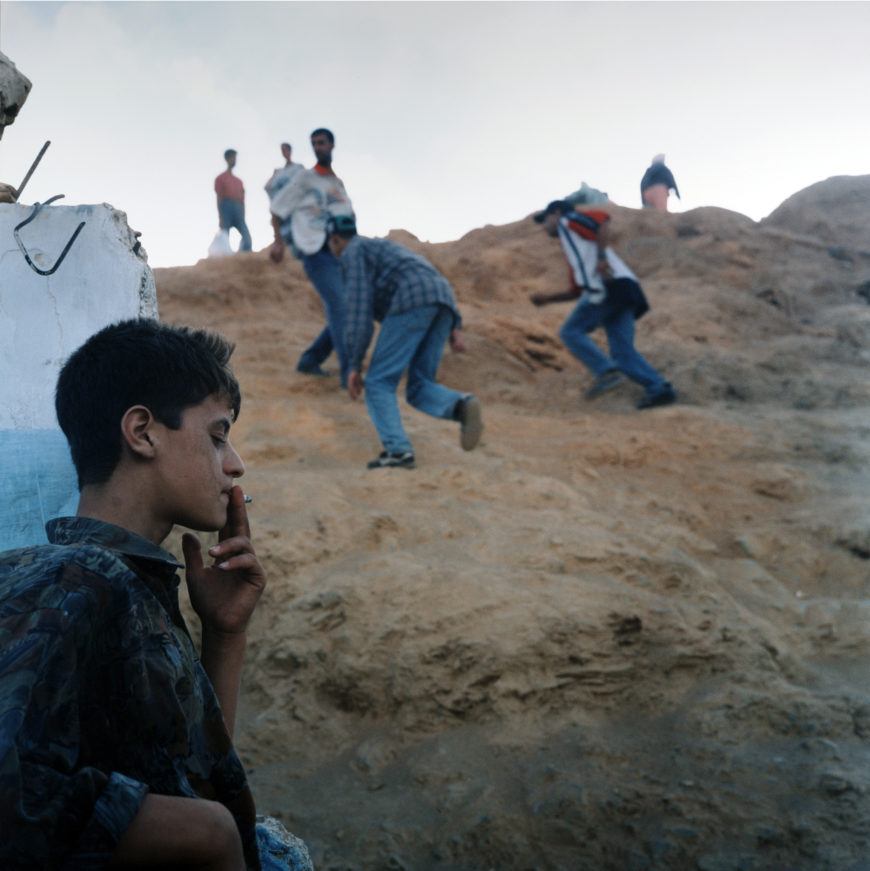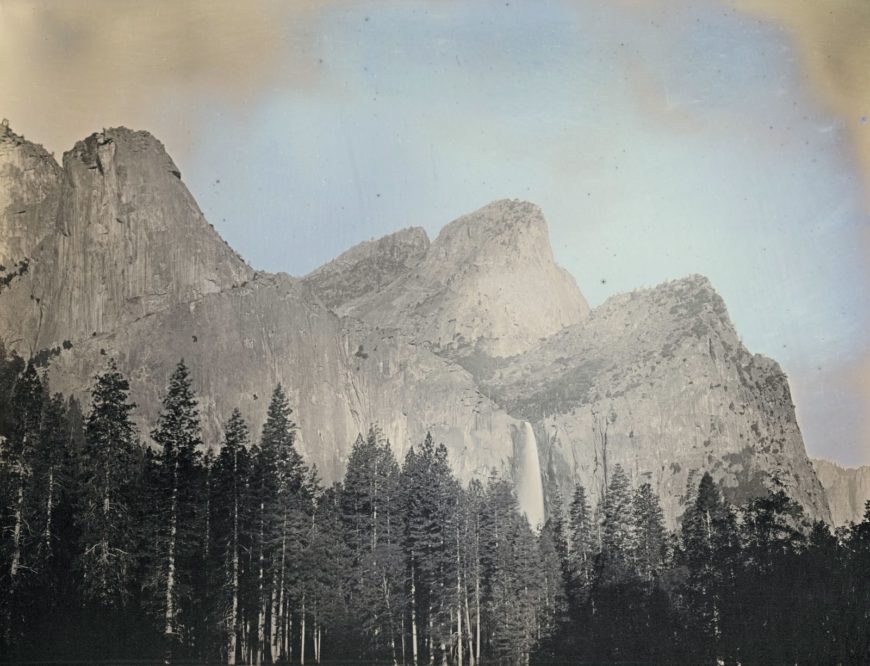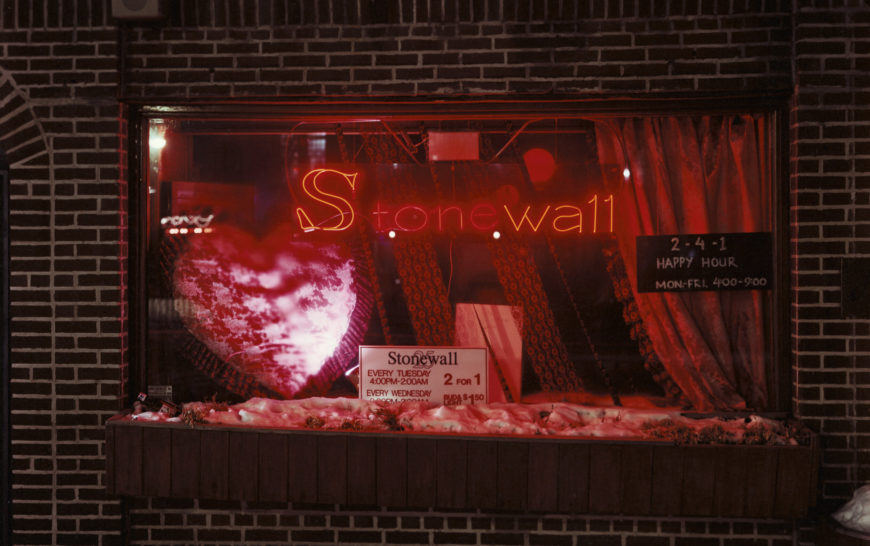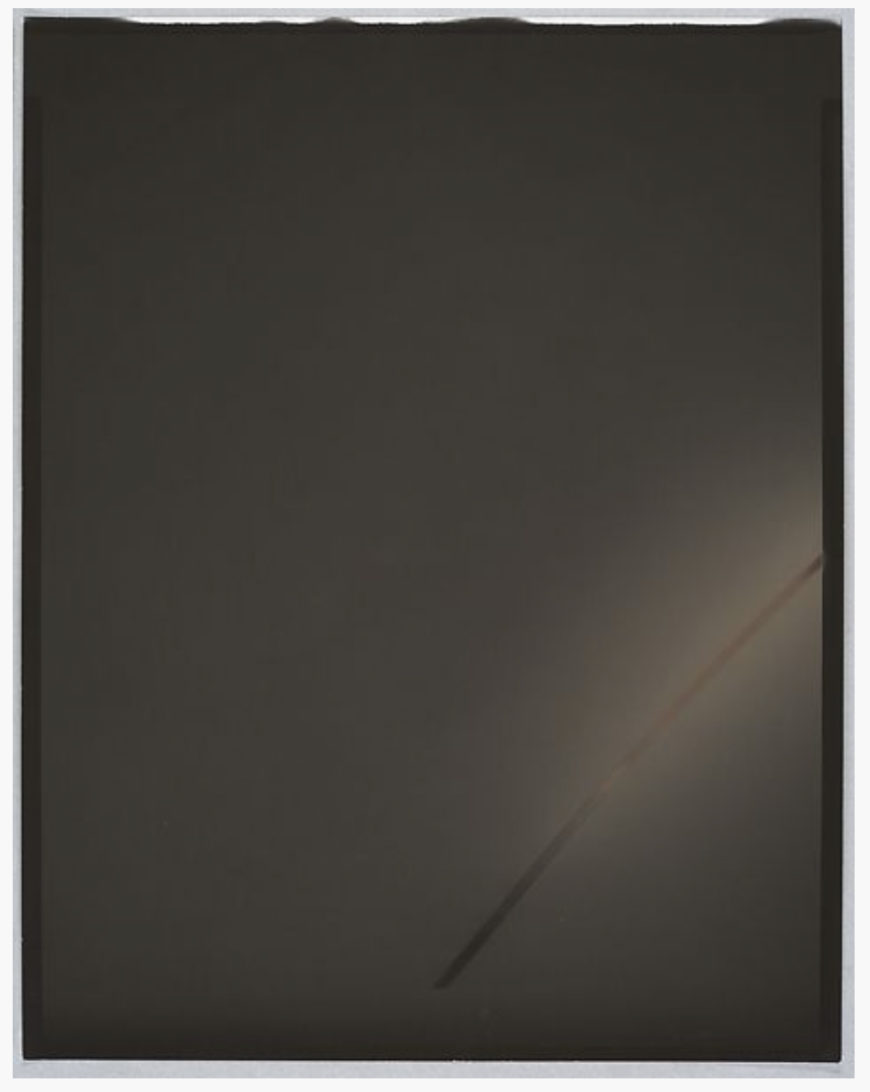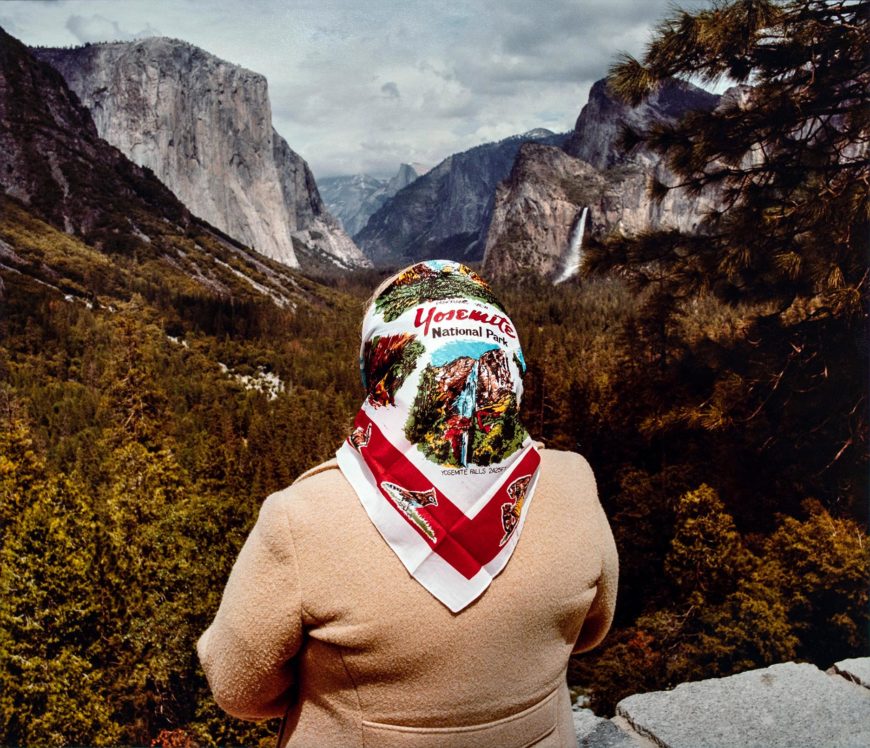Building the American dream in the California desert.
Stéphane Couturier, Fenetre, Eastlake Greens, San Diego, edition 4/8, 2001, dye coupler print, 130.81 x 107.95 x 2.54 cm (Los Angeles County Museum of Art, © Stéphane Couturier)
[0:00] [music]
Dr. Steven Zucker: [0:06] We’re in the LACMA Study Center for Photography and Works on Paper. This is a place where we can bring photographs out to look at that are not on exhibition, and today we’re looking at work by Stéphane Couturier, a large photograph called “Fenetre, Eastlake Greens, San Diego.”
Elizabeth Gerber: [0:23] This photograph comes from a series Couturier made. He’d been invited to photograph in the San Diego-Tijuana region in southern California, and his whole career up till this point has been looking at transformation, looking at urban environments that are always changing.
[0:43] Here in this series, you see a suburban community that is partially lived in, partially being built. Then in the background you get the whole sense of the vast California desert that this housing community is taking over and coming up against.
Dr. Zucker: [1:01] One important issue is the formal beauty of this print. We have the built environment in the foreground, and then two zones beyond that, this parched desert where seemingly nothing grows. But beyond that, this blue zone, where we can just make out distant mountains.
Elizabeth: [1:17] There’s so much visual information, but it’s also the framing of it. We’re standing in an unfinished building; he created a window for us to look through onto the settlement. There’s a whole history, both in painting as well as in photography, of using the window, and it’s multi-layered itself because it’s how photographs work, in a sense.
[1:39] You need that open and closed to get the light into the camera to capture the image, but it’s also more metaphorical or symbolic of a window onto the world that photographers are looking at. So in a very simple but very smart gesture, Couturier is referencing that whole history as well as having us look at this community that is being built in front of our eyes.
Dr. Zucker: [2:02] Thinking back to Romanticism, the paintings of Caspar David Friedrich, or even to the first years of the Renaissance, the surface of the painting itself is a picture plane through which we see into a world beyond.
Elizabeth: [2:13] You move up into 20th century photographers, and whether it’s Alfred Stieglitz, photographers looking at the very artistic qualities of the medium, street photographers who are doing more documentary photography, this idea of the window plays itself throughout all of it, as well as a lot of contemporary photographers.
Dr. Zucker: [2:32] But here the frame is really part of the photograph. It is part of the subject matter. It is this half-constructed house with raw lumber.
Elizabeth: [2:40] From where we’re standing, we’re inside of this house. Because of the crispness in the foreground on that ledge you can see a nail, you can even see some of the marks that the construction workers have used. You get the sense of this being in process, which I think is so important because that mirrors the subject in the other parts of the photograph.
Dr. Zucker: [3:02] And that process couldn’t be more evident. We have just newly completed homes in the foreground. We see two cars that sit in the driveway of one of those completed houses.
Elizabeth: [3:12] You see those two cars, you see the potted plants. Then you start to notice the trucks from the construction workers parked on the street behind those initial homes and you see the roofing materials stacked up. Then you see the landscape that hasn’t yet been taken over by the housing development.
Dr. Zucker: [3:32] Taken over is the perfect word because this is a landscape in transition, and it poses, I think, profound philosophical questions about our use of the landscape, more particularly of this landscape. This is an arid environment, not a hospitable environment, and yet we’re imposing our vision of the American dream, of a free-standing suburban house with a perfect lawn, in a desert.
Elizabeth: [3:56] California has a whole history of water use, of settlement going back to earlier centuries. When we think about the 20th century, not only southern California but Arizona and parts of New Mexico, parts of Nevada, there’s been huge growth in population through homes like this.
[4:17] There’s also increased political power and re-centering of certain national dialogues and political dialogue.
[4:24] [music]


